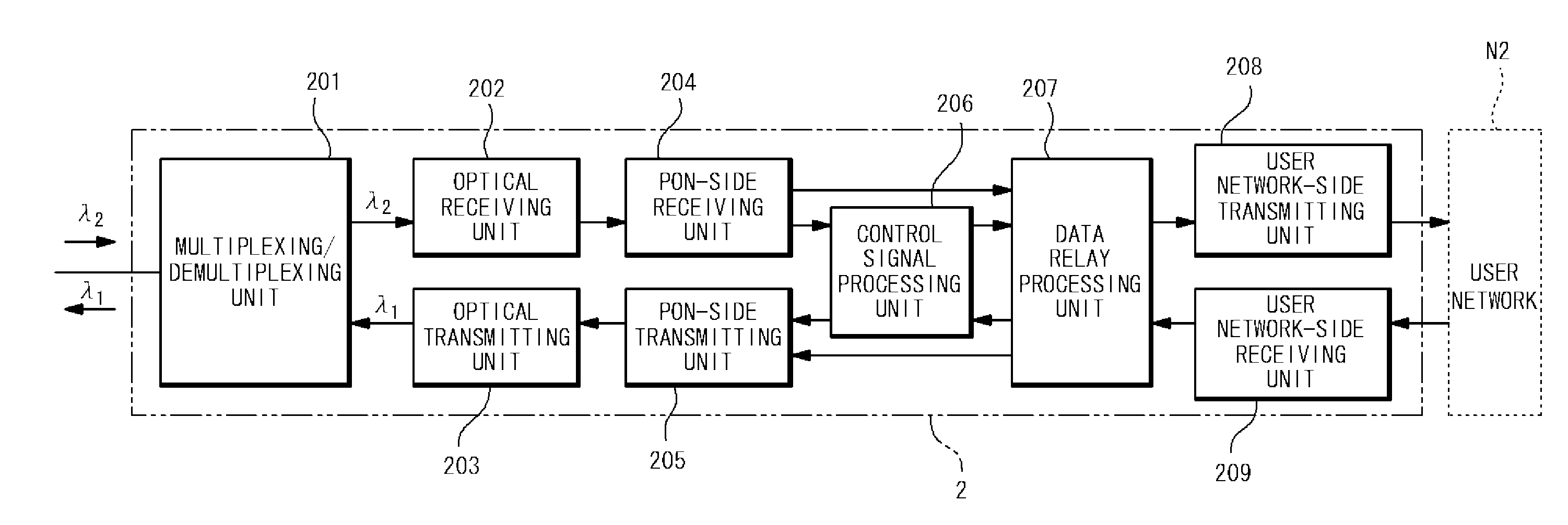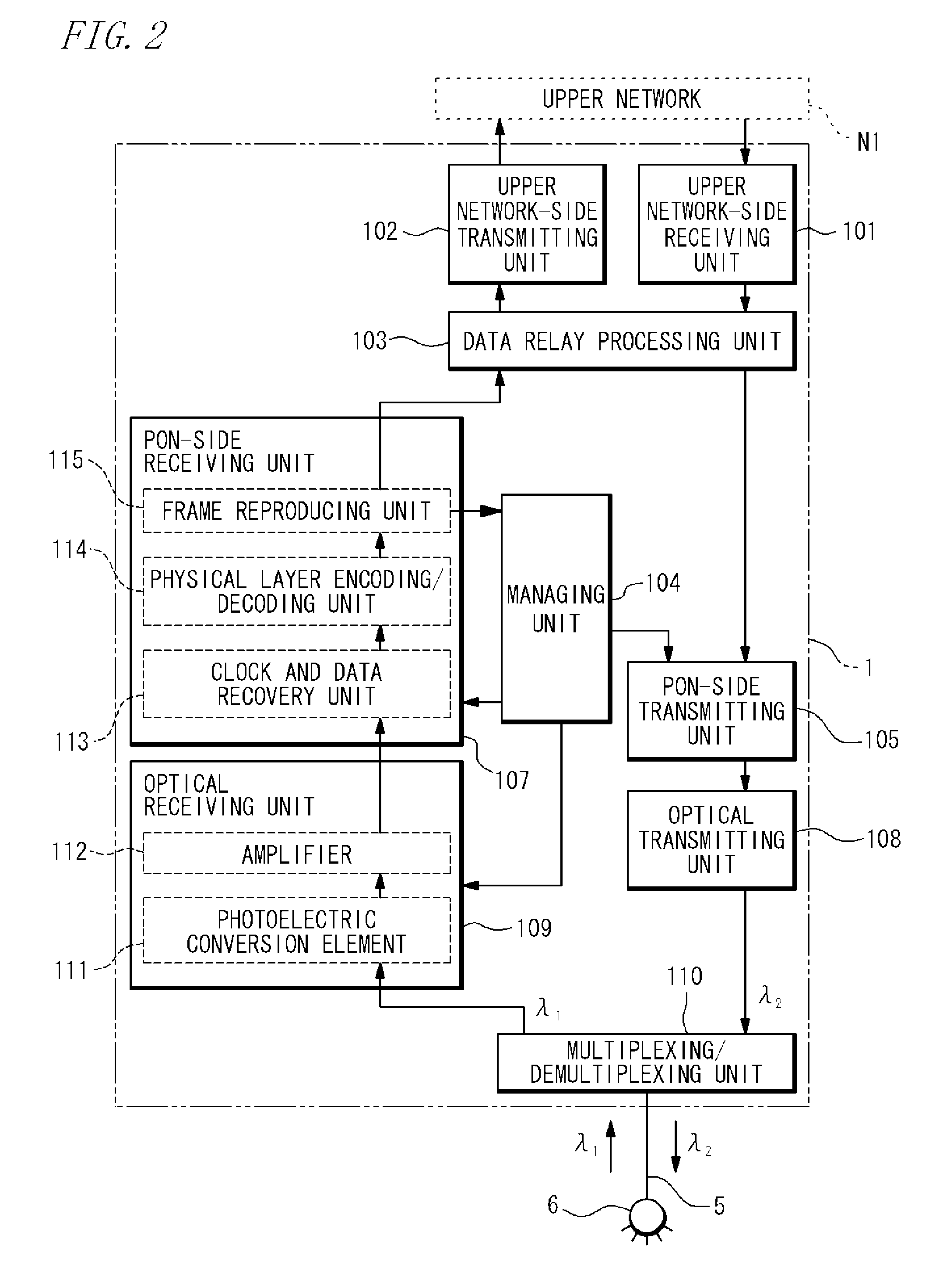Receiving unit, optical line terminal, and frequency calibration method for clock and data recovery circuit
a clock and data recovery circuit technology, applied in the direction of pulse automatic control, multi-component communication, digital transmission, etc., can solve the problem of large fluctuations in the frequency of voltage-controlled oscillators, difficult to detect a very small frequency change caused, stray capacitance of wiring, etc., and become non-negligen
- Summary
- Abstract
- Description
- Claims
- Application Information
AI Technical Summary
Benefits of technology
Problems solved by technology
Method used
Image
Examples
example 1
[0118]As described above, discovery of a new optical network unit by the optical line terminal 1 is periodically performed. FIG. 13 is a diagram showing provision of a discovery period during an interval of receiving packets as upstream signals from the optical network units 2 to 4, and a horizontal axis indicates time. In the drawing, although the time interval between packets is only on the order of at most one μsec, the discovery period has a time period of several hundred msec to one second. In addition, the discovery period normally has, in its second half, a no-signal section after completion of discovery. The length of this section may be greater than or equal to the time required for calibration. Hence, when, during a discovery period, a no-signal section occurs due to completion of discovery, if the remaining no-signal section is greater than or equal to the time required for calibration, then the managing unit 104 outputs a reset signal to the calibrator 16 at the same tim...
example 2
[0121]Meanwhile, instead of a no-signal section of a discovery period such as that described above, a period that is periodically assignable as a discovery period may be used for calibration once every plurality of times. Specifically, as shown in FIG. 14, a period that is normally assignable as a discovery period is not used for discovery once every plurality of times, but is used as a period for calibration. Then, during this period, a reset signal is outputted to the calibrator 16 from the managing unit 104. In this case, calibration can be periodically and reliably performed such that discovery is skipped once every plurality of times.
[0122]Note that the above-described “once every plurality of times” is merely an example and thus calibration does not necessarily need to be performed with a certain frequency. Namely, the frequency (cycle) of performing calibration may vary. In a word, use of one of a plurality of periods which are assignable as discovery periods, to output a cal...
example 3
[0123]In a multi-rate PON system, as shown in FIG. 8, a plurality of clock and data recovery circuits are provided to support the respective transmission rates. Thus, when any one of the clock and data recovery circuits is extracting a clock signal and a data signal from an upstream signal, it can be said that the other clock and data recovery circuit is in a state having no received signal from which a clock signal and a data signal are to be extracted. Therefore, for example, when packets with either one of transmission rates L and H continue, in a clock and data recovery circuit with the other transmission rate, the duration of a state having no received signal from which a clock signal and a data signal are to be extracted may be greater than or equal to the time required for calibration. Thus, in such a case, too, calibration of the voltage-controlled oscillator in the other clock and data recovery circuit can be performed.
[0124]As described in detail above, in a receiving unit...
PUM
 Login to View More
Login to View More Abstract
Description
Claims
Application Information
 Login to View More
Login to View More - R&D Engineer
- R&D Manager
- IP Professional
- Industry Leading Data Capabilities
- Powerful AI technology
- Patent DNA Extraction
Browse by: Latest US Patents, China's latest patents, Technical Efficacy Thesaurus, Application Domain, Technology Topic, Popular Technical Reports.
© 2024 PatSnap. All rights reserved.Legal|Privacy policy|Modern Slavery Act Transparency Statement|Sitemap|About US| Contact US: help@patsnap.com










